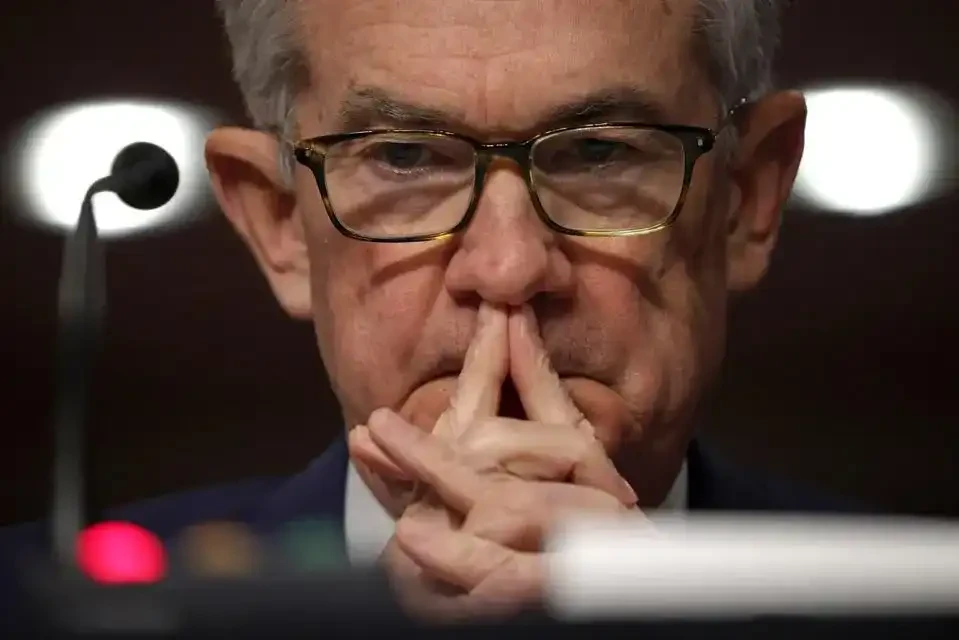The Bitcoin market is preparing for a volatile month as the anticipated rate cut by the Federal Reserve in the United States has garnered widespread attention.
Following a significant drop in the price of Bitcoin from around $65,000 at the end of August to approximately $59,000 in early September, the market is expected to experience more turbulence. The outcome of the next Federal Reserve meeting, which is expected to trigger a rate cut, is likely to determine the short-term direction of Bitcoin against the US dollar. However, what is causing more anxiety in the market is the potential deeper economic instability.
Most market participants expect a 25 basis point rate cut, but there are also rumors that the Fed may take a more aggressive 50 basis point rate cut, which could likely lead to even greater market volatility. As the global economy struggles under the heavy pressure of poorly managed central bank policies and market distortions, investors who use Bitcoin as a hedge against currency devaluation may face a test of confidence.
Impact of Fed Rate Cut on Bitcoin
The heightened anticipation of the Fed's upcoming rate cut has intensified market uncertainty. Historically, rate cuts have been viewed as positive for Bitcoin, as loose monetary policy often weakens the US dollar and boosts asset demand. However, this rate cut could be a double-edged sword.
In 2022, the Fed embarked on an aggressive tightening cycle to curb inflation, but now, with deteriorating economic conditions, the Fed is forced to pivot. This was expected in a financial system reliant on sustained liquidity injections.
For Bitcoin, although it has historically benefited from loose monetary policies, the Fed's decision this time may yield unexpected results. As an alternative to fiat currency, Bitcoin particularly shines during currency devaluation. However, the potential for an aggressive 50 basis point rate cut introduces a factor that market participants may not have fully considered: concerns about an impending economic slowdown or even recession. If the Fed signals deeper economic concerns, market participants may shy away from assets they perceive as riskier, including Bitcoin, despite its value as a decentralized currency network remaining unchanged.
Does a 50 Basis Point Rate Cut Indicate Deeper Issues?
Concerns about a 50 basis point rate cut stem from a broader macroeconomic backdrop. The Fed's emergency tightening in 2022 aimed to curb inflation but also exposed potential weaknesses in the economy, which are now manifesting in the form of a slowing labor market.
Last Friday's employment report marked another chapter in years of poor performance in the US labor market. This trend has been overshadowed by exaggerated employment reports, which have been repeatedly revised downward after their initial release. The recently released report actually showed signs of weakness in the labor market at the time of its release, with the US Bureau of Labor Statistics' household survey indicating that the unemployment rate did not improve over the past month, and the number of unemployed individuals increased from 6.3 million to 7.1 million over the past year. This indicates that the labor market has become so weak that its weaknesses can no longer be concealed.
Many workers are still struggling economically. Depending on different measures, the purchasing power of US wages either keeps pace with inflation or lags behind it.

Federal Reserve Chairman Jerome Powell (Photo by Alex Wong)
Global Economic Conditions and Bitcoin's Long-Term Prospects
Central banks around the world are also grappling with the challenges of economic weakness. The European Central Bank and the Bank of Japan are both facing issues that could impact global liquidity flows. The Eurozone's GDP grew by only 0.2% in the last quarter, and the Bank of Japan is considering a rate hike, which could accelerate the unwinding of yen carry trades. Meanwhile, a major country is preparing to inject liquidity into its slowing economy in an attempt to avoid a recession, as factory output, consumption, and investment have all slowed, and the unemployment rate has risen to a six-month high.
In addition, the intense US presidential election season has brought about uncertainty in economic policy prospects, which could have negative effects on investment and economic growth. If candidates supporting these policies gain political momentum, the exchange rate of Bitcoin against the US dollar is expected to become even more volatile.
The relationship between Bitcoin and global economic conditions has "multiple personalities," making its price movements difficult to predict. In some situations, such as the early stages of the Ukraine war, Bitcoin has acted as a risk-averse asset, while in other situations, such as the initial outbreak of the COVID-19 pandemic, it has behaved as a risk-seeking asset.
However, it is clear that central banks' attempts to cover deep-seated cracks in rule-based orders through liquidity injections will ultimately highlight Bitcoin's long-term advantages. Over time, Bitcoin's monetary properties will eventually prevail.
September, a Memorable Moment for Bitcoin?
As September progresses, Bitcoin investors are preparing for a potential volatile market. The upcoming Fed rate cut decision has made the outlook for Bitcoin uncertain. While the market may have already factored in the impact of a 25 basis point rate cut, limiting its short-term effects, a rate cut of 50 basis points could signal deeper economic issues and trigger waves of volatility.
However, there is still room for surprises in the market. If the Fed can strike a balance between addressing economic risks and maintaining market confidence, Bitcoin may emerge stronger after this turbulent period. However, if concerns about a recession continue to escalate, the price of Bitcoin may further decline, and investors will have to contend with an increasingly unpredictable market.
免责声明:本文章仅代表作者个人观点,不代表本平台的立场和观点。本文章仅供信息分享,不构成对任何人的任何投资建议。用户与作者之间的任何争议,与本平台无关。如网页中刊载的文章或图片涉及侵权,请提供相关的权利证明和身份证明发送邮件到support@aicoin.com,本平台相关工作人员将会进行核查。




